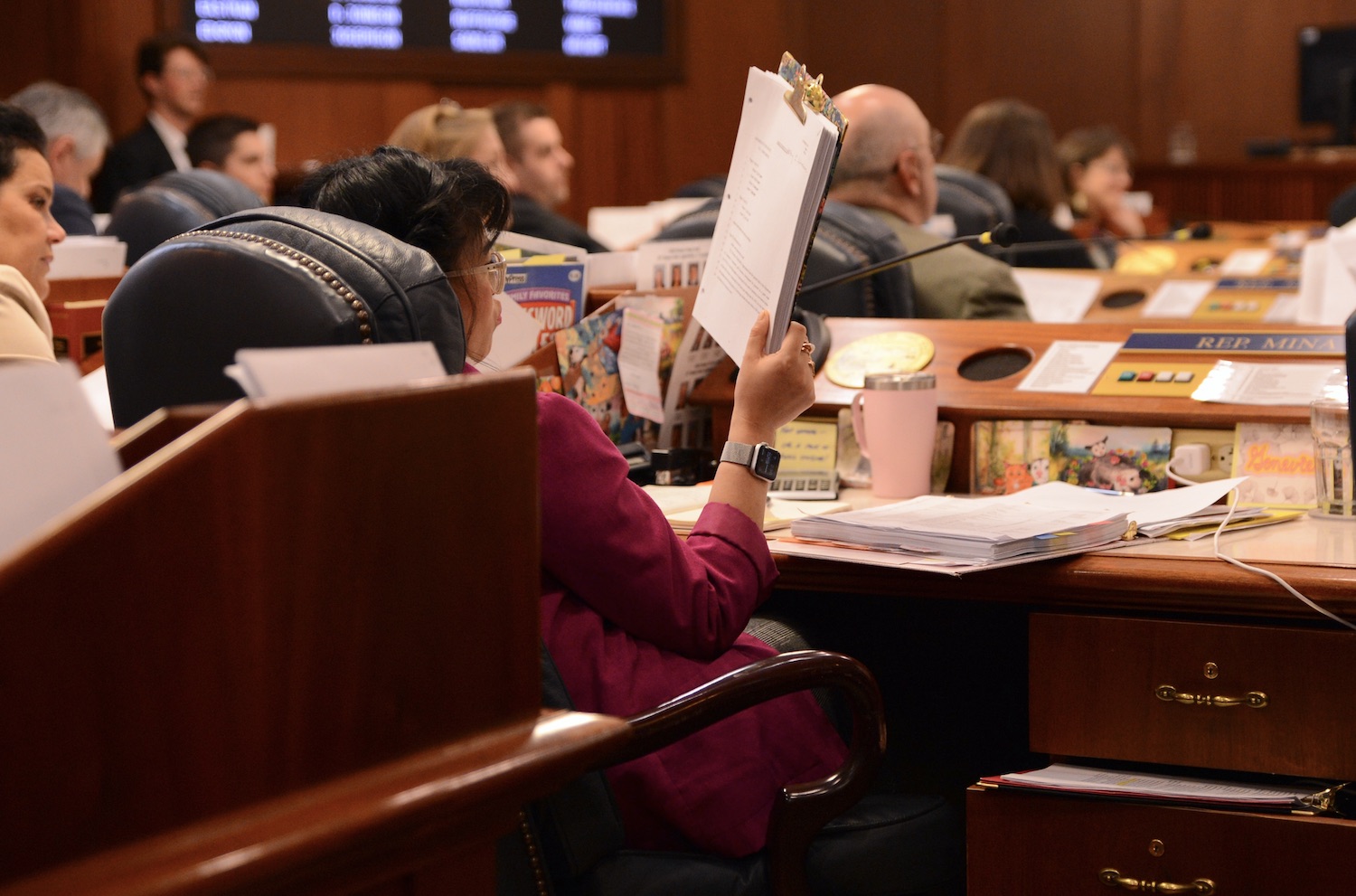
As the Alaska House of Representatives opened debate on the state operating budget Tuesday, financial experts away from the House floor were calculating that the draft spending plan under discussion may not be affordable.
The operating budget, which will pay for state services for 12 months starting July 1, clocks in at $6 billion, excluding federally funded and fee-funded programs. The state’s capital budget, which covers construction and renovation projects, is expected to be another $550 million. Other legislation, labor contracts under negotiation, and additional items are expected to add at least $100 million more.
Altogether, the total is more than the state’s expected general-purpose revenue from investments, oil and other taxes.
“The question’s going to be: Where’s that money going to come from?” said Rep. Dan Ortiz, I-Ketchikan. “Without added revenue, it’s probably going to come from the PFD.”
But on Tuesday, legislators declined to make any changes to their draft plan for the 2024 Permanent Fund dividend — a $2,270 payout that would be the largest single item in the budget.
Members of the House voted down amendments from Ortiz and Rep. Sara Hannan, D-Juneau, that would have reduced the planned payout.
Members of the House also declined to make significant additions to the budget, voting down amendments that would have increased a $175 million funding bonus for K-12 public schools.
There’s general agreement in the House that Gov. Mike Dunleavy would use his line-item veto powers to reduce or eliminate any bonus, just as he vetoed a multipart education bill that included a permanent funding increase.
“A lot of this is symbolic,” said House Minority Leader Calvin Schrage, I-Anchorage. “If the number is going to get changed by someone else later on, why don’t we stand up for the number we believe in?”
Despite his plea, the education amendments were rejected, as were requests for additional funding to the state’s seafood-marketing and tourism-marketing organizations.
The only changes approved by the House before a break for dinner on Tuesday were the addition of $300,000 in funding for Alaska’s team to the Arctic Winter Games and a cost-free amendment requiring that an Anchorage homeless shelter be placed at the center of a drug-free zone.
Earlier this year, at the urging of the House, legislators from both House and Senate agreed to a strict timeline for budget work.
Using that timeline, they set the amount of this year’s capital budget at $550 million last week, before the House began amendment work on the operating budget.
The capital budget pays for construction and renovation projects statewide, and the capital budget figure hasn’t been publicly announced but was confirmed by legislators and staff involved in the discussions.
That figure, plus the $6 billion cost of the current operating budget and at least $100 million for newly passed legislation, is more than the state expects to receive in revenue during the upcoming fiscal year.
The gap, according to preliminary estimates available from the Senate on Tuesday, is $276 million.
Senators declined to share the document they were working with and have scheduled a news conference Wednesday. They are expected to discuss the capital budget at that time.
Members of the House disagreed with the Senate estimate and said they believe the figure is lower, but House Finance co-chairs Bryce Edgmon, I-Dillingham and DeLena Johnson, R-Palmer each declined to share their alternative on Tuesday.




